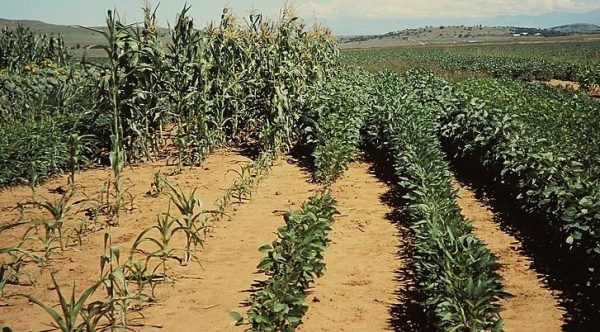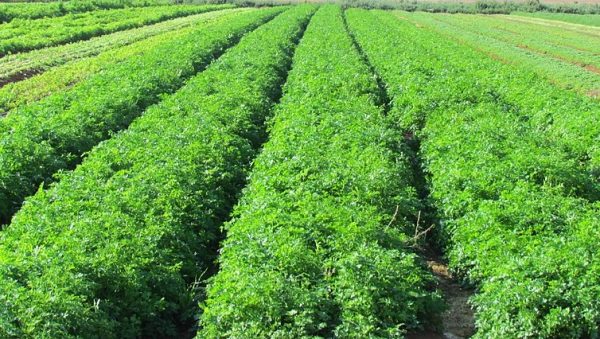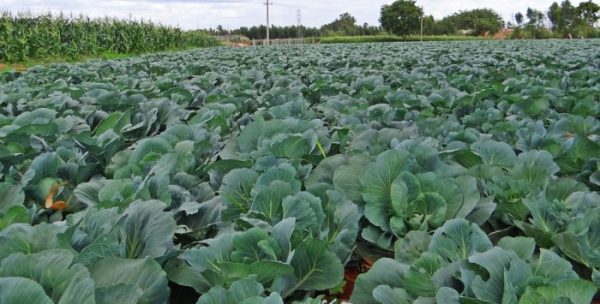Crop Plants:
The following information is about crop plants.
Introduction to Crops
What is a crop? Well, the crop is a plant or animal that can be grown for human use and profits. Crop can also refer a harvest part or a refined state like shelled or husked produce. Crop word is being used extensively both in agriculture, horticulture and aquaculture. It is very important to know about classification of plant crops in agriculture sector. With basic knowledge of crop plants and their classification, you can very well decide on your future goals. Let us get into more details of crop plants specific to Indian region.
What is the necessity of knowing bout Classifying Crops or their Importance?
- For better knowing the crop pattern and schedules.
- For better understanding of different crop adaptabilities.
- For better understanding of irrigation/ water requirement for different season crops.
- For better understanding of soils suitable for different crops.
- For better understanding of agro-climatic conditions for different crops.
- For better understanding of growing habits of different crops.
- For better understanding of economic value of crops and their use.
- For better understanding of different crop seasons.
- By knowing crops and their suitability, you can plan very well in advance.
- Finally, it makes us to know the complete requirements for growing agriculture crops.
Categories of Crops based on Agro-climate
There are two types of crops can be grown depending upon the climate.
Temperate Agricultural Crops: Under this category, generally, agriculture crops thrive best in cool climatic conditions. Some examples of temperate crops are given below. This may include vegetable crops, fruit crops, grain crops, and spice crops.
- Wheat.
- Corn.
- Onions.
- Garlic.
- Asparagus.
- Beans.
- Soybean.
- Chickpeas.
- Quinoa.
- Beets.
- Spinach.
- Lentils.
- Peanut/groundnut.
- Millets.
- Barley.
- Oats.
- Green Gram.
- Carrot.
- Squash.
- Tomato.
- Tomatillo.
- Chiles.
- Peppers.
- Broccoli.
- Cauliflower.
- Choi sum.
- Watercress.
- Quinoa.
- Lentils.
- Gourds.
- Melons.
- Cucumbers.
- Parsley.
- Cilantro.
- Cumin.
- Apple.
- Pears.
- Peach.
- Apricot.
- Plums.
- Cherry.
- Anise.
- Raspberry.
- Blackberry.
- Blueberry.
- Strawberry.
- Almond.
- Black Gram.
- Potato.
- Walnuts.
- Pecans.
- Grapes.
Tropical Agriculture Crops: Under this category, crop plants thrive best in warm and hot agro climatic conditions. Some examples of tropical crop plants are given below. This may include vegetable crops, fruit crops, grain crops, and spice crops.
- Rice (Paddy).
- Sugarcane.
- Jowar.
- Bamboo.
- Cashew.
- Mangos.
- Guava.
- Cloves.
- Taro Root.
- Coconut.
- Vanilla.
- Banana.
- Ginger.
- Lychee.
- Longan.
- Rambutan.
- Turmeric.
- Pineapple.
- Papaya.
- Star fruit.
- Cacao.
- Tea.
- Durian.
- Water chestnut.
- Avocado.
- Lotus.
- Soursop.
- Orange.
- Lemon.
- Lime.
- Grapefruit.
- Pomelo.
- Kumquat.
- Noni.
- Coffee.
- Kava.
- Black Pepper.
- Cinnamon.
- Tamarind.
- Amaranth.
- Malunggay.
- Carob.
- Jicama.
- Wing & Yard-long beans.
- Yam.
- Pandanus.
Agriculture Crops based on growing seasons in India
There are basically 3 seasonal crop plants per year are grown in India.
Kharif / Monsoon / Rainy season Crops: The agricultural crops grown during Kharif season are from the month of June to October (Rainy season). Basically, the crops under Kharif season requires warm and wet climate throughout their growth. The crop plants grown in Kharif season requires short day length for quick flowering stage.
The following are some of the common Kharif season crop plants grown in India.
- Rice/Paddy.
- Cotton.
- Sugarcane.
- Jowar.
- Millets.
- Corn.
- Soybean.
- Turmeric.
- Bitter Gourd/Karela.
- Custard Apple.
- Flaxseed/Linseed
- Green Gram/ Moong Dal.
- Sesame Seed.
- Arhar/Tur dal.
- Black Gram/Urad dal.
- Cowpea.
Rabi / Winter / Cold Seasonal Agricultural Crops: The crops grown in Rabi season require cold climate with dry conditions for their best growth and good yield. The best season for these crop plants is from the month of October to March. This may change for different regions in the world based on their local climatic conditions or seasons. The crop plants grown in Rabi season requires long days for better flowering of crop plants.
The following are some of the common Rabi/Winter season crop plants grown in India.
- Wheat.
- Gram/Pulses.
- Sunflower.
- Oats (Cereals).
- Barley.
- Coriander/Cilantro.
- Mustard.
- Fennel.
- Fenugreek.
- Carrots.
- Chickpeas.
- Onions.
- Tomatoes.
- Potatoes.
Summer / Zaid Crops: Usually, the crop plants in summer are from the month of March to June. These crop plants require warm day climate and longer day length for flowering for better growth and yield.
The following are some of the common Summer/Zaid season crop plants grown in India.
- Groundnuts/Peanuts.
- Watermelon.
- Pumpkins.
- Mango.
- Gourds (Bitter gourd, Pumpkin, Ridged gourd).
- Muskmelon.
Agronomic classification of Crops or Use classification of Crops
Grain Crops: These plants are grown for their edible grains. Most of the time, these grains are used as staple food.
Some of the common grain crop plants are grown:
- Wheat.
- Rice.
- Corn/Maize.
- Barley.
- Cereals.
- Millets.
- Bajra.
Legume Crops / Pulse Crops: The produce from these are crop plants are usually referred as seeds. These seeds are used as food. Splitting these pulses result in “dal” which has a good protein source. These split pulses/seeds (dal) are used in many soups/dishes.

Some of the common Legume/Pulse crop plants are grown:
- Green gram (Moong dal).
- Black gram (Urad dal).
- Red gram or Pigeon pea (Tur dal).
- Soybeans.
- Green peas.
- Cowpeas.
Oil Seed Crops: The oil seed crops are being used for extracting vegetable oils to fulfill various requirements in food and other sectors.
Some of the common Oil Seed crop plants are grown:
- Groundnut/Peanut.
- Soybean.
- Safflower.
- Castor.
- Mustard.
- Rapeseed.
- Vanaspati.
- Sunflower.
- Sesamum.
- Flaxseed/Linseed.
Forage Crops / Green Fodder Crops: These crops are grown for vegetative matter for livestock feed. These crops can be used for hay, and making silage.
Some of the common Forage crop plants are grown:
- Sorghum.
- Bajra.
- Niper grass.
- Guinea grass.
- Elephant grass.
Fiber Crops: These crops are grown for fiber, which are being obtained from crop seed.
Some of the common Fiber crop plants are grown:
- Jute.
- Cotton.
- Mesta.
- Sun hemp.
- Flaxseed / Linseed.
Root Crop Plants/Tuber Crops Plants: The main output of these crops are roots and tubers. These roots and tubers are edible.
Some of the common Root crops/Tuber crop plants are grown:
- Carrot.
- Potato.
- Yam.
- Sweet Potato.
- Beets.
- Turnips.
- Taro roots.
Sugar Crops: For production of sugar, the important crops grown are sugar cane and sugar beets.
Starch Crops: These crops are grown for starch production.
Some of the common Starch Crop Plants grown are:
- Potato.
- Tapicoa.
- Sweet Potato.
Drug Crops: These crops are grown for medicinal purposes.
Some of the common Drug Crop Plants grown are:
- Tobacco.
- Pyrethrum.
- Mint.
Spice and Condiments Crops: Well, these crops produce, spices and other color agents used in a variety of foods to get flavor and color.

Some of the common Spice and Condiments Crop Plants grown are:
- Cardamom.
- Garlic.
- Ginger.
- Turmeric.
- Cloves.
- Cumin.
- Chilli.
- Onions.
- Bay leaf.
- Black Pepper.
- Coriander/Cilantro.
- Mint.
- Curry Leaves.
- Star ansie.
- Tamarind.
- Ajwain.
- Fenugreek.
- Cinnamon.
- Asafoetida.
Vegetables Crops: These crops are grown for their edible produce. These may include root vegetables, leafy vegetables and others.

Some of the common Vegetable Crop Plants grown are:
- Leafy vegetables (spinach, smrnath, sale, turnip greens etc..).
- Other vegetables (like tomato, okra, onion, brinjal/eggplant, beans etc..).
Medicinal and Aromatic Crops: These are grown for medicinal use and refreshing.
Some of the common Medicinal and Aromatic Crop Plants grown are
Medicinal crops include:
- Cinchona.
- Stevia.
- Isabgoli.
- Opium poppy.
- Senna.
- Belladonna.
- Rauwolfra.
- Iycorice.
Aromatic crops include:
- Lemon grass.
- Citronella grass.
- Palmorsa.
- Peppermint.
- Rose geranicem.
- Jasmine.
Green Manure Crop Plants: These crops are grown for the purpose of increasing soil fertility (soil nutrients). Some of the green manure crop plants include pillipesara, and sun hemp.
Crops Based on their Life or Duration of Crops
There are 4 types grown in this.
- Seasonal Crops: In this, a crop usually completes their life cycle in one season either in Kharif, Rabi or Summer season. Some of the common crops under this are Paddy/Rice, Wheat, and Jowar.
- Two seasonal Crops: In this, crops usually complete their life cycle in two seasons. . Some of the common crops under this are Ginger, Turmeric, and Cotton.
- Annual Crops: In this, crops require 1 full year to complete their lifecycle. The best example for this is Sugarcane.
- Biennial Crops: In this, crops grow in 1 year and flowers and complete fruiting in another year. The best examples we can quote are; Papaya and Banana.
- Perennial Crops: These plants live for several years. The best example for this is Mango, Orange, Lemon, Guava, Dates, Apple etc..
Crops based on Irrigation/Cultural Methods
- Rain fed Crop Plants: Under this, usually crops are grown by utlizing only rain water. Some of the common crop plants include Maize/corn, Jowar, Bajara,Gram and some Millets.
- Irrigated Crops Plants: Under this, usually crops are grown with irrigation water. Some of the crops include Sugarcane, Banana, Papaya, Mango, Lemon, Organges, and Guva etc..
Crops based on Root System
- Tap root system of Crop Plants: In these crops, the main root usually gets into deeper level of the soil. The best example of these crops are cotton, Tur, and Grape.
- Fiber root system of Crop Plants: In this, the crops are grown with shallow root system by spreading into the soil. The best examples of these crops are Cereal crops, Wheat, and Paddy/Rice.
Crops based on Economic Importance
- Cash Crop Plants: These crops are purely grown for cash/money. The best examples are Cotton and Sugarcane crops.
- Food Crop Plants: These crops are grown to cater the rising population as well as livestock fodder. The best examples are Rice/Paddy, Jowar, Wheat and Millet crops.
Crop plants based on number of Cotyledons
- Monocotyledons Crops: These crops will have 1 cotyledon in the seed. The best examples are all cereal and millet crops.
- Dicotyledonous Crops: These crops will have 2 cotyledons in the seed. The best examples are all legumes and pulses/gram crops.
Crops based on Photosynthesis
- C3 Crops: These crops use low water and photo respiration is high in these crop plants. The best example is Paddy/Rice, Wheat, Soybeans, Cotton, Barley, and Potato.
- C4 Crops: Usually, the photosynthetic rate is higher in C4 than C3 crop plants. These plant crops more drought resistant and best suited for moisture stress conditions. The best crop examples are Corn/Maize, Sorghum, and Sesame.
- Cassulacean Acid Metabolism Crops: The C4 and Cassulacean Acid Metabolism Crop Plants have high water use efficiency. These crops are also highly drought resistant. The best examples are Pineapple crop.
Crops based on length of Photoperiod
Most crop plants are impacted by day length and night length. This is very much important for floral initiation.
- Short day crops: Usually, in these plants, floral initiation takes place if the day length is less than 10 hours. The best example crops are ; Paddy/Rice, Jowar, Green gram, and Black gram.
- Long day crops: These crops require longer days, usually more than 10 hours for flower initiation. The best crops are Wheat, and Barley etc..
- Day neutral crops: In these crops, photoperiod does not have much impact. The best examples are; Sunflower, and Cotton.